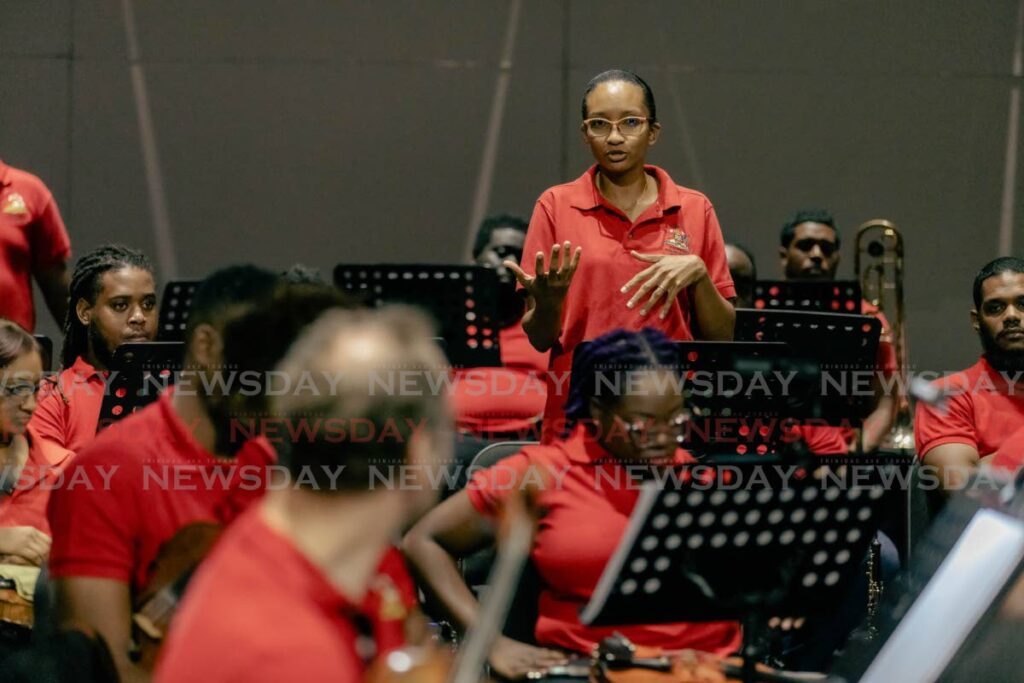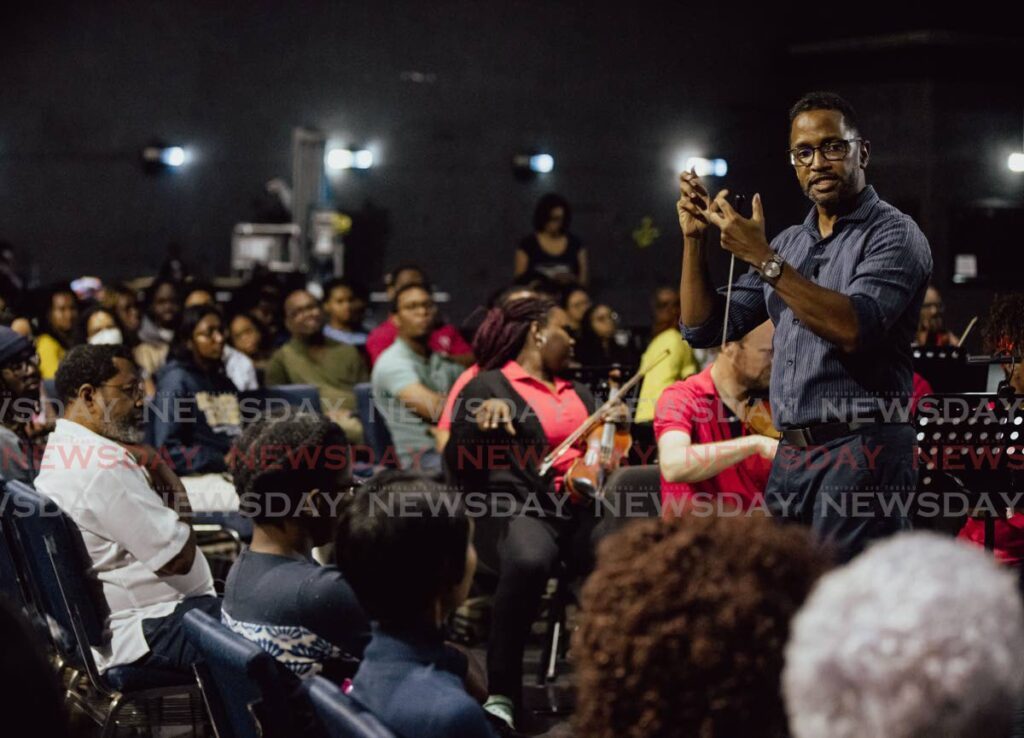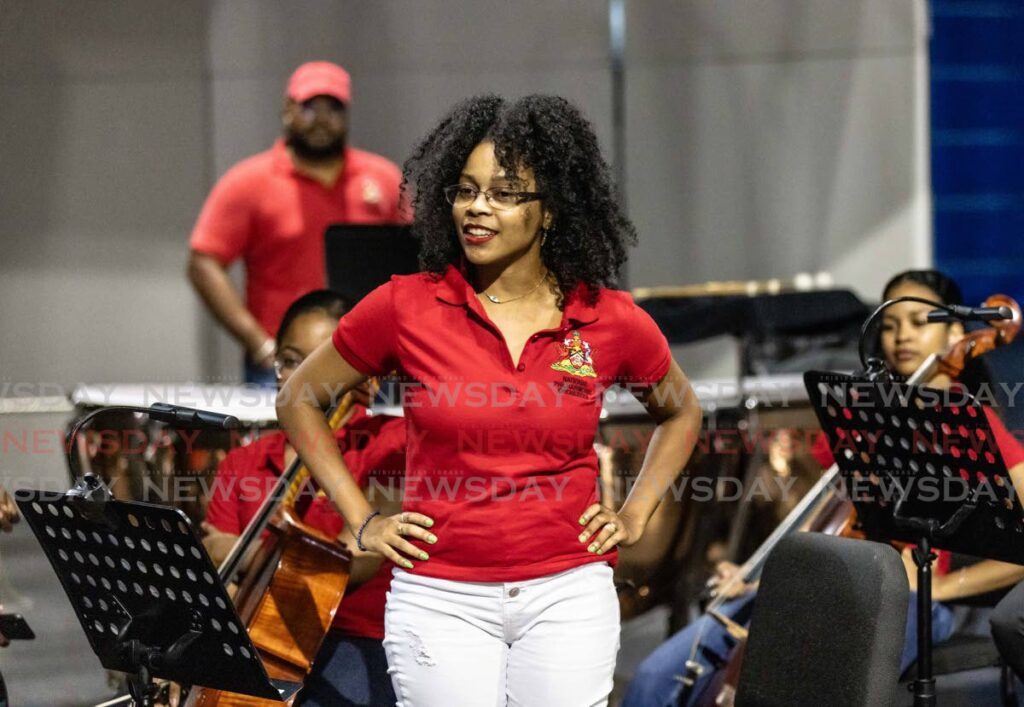Izza Riddum promises high-quality concert from National Philharmonic Orchestra

NIGEL A CAMPBELL
The National Philharmonic Orchestra of Trinidad and Tobago (NPO) is on an ongoing mission to expand the local awareness of western classical instrumentation and develop a cadre of musicians to make that connection between the performance of indigenous and international music at the highest level and appreciative audiences here.
As it prepares for its latest concert programme, Izza Riddum, a soca and calypso concert on May 29 at the National Academy for the Performing Arts (NAPA), Frederick Street, Port of Spain, Newsday spoke to Dr Roger J Henry, artistic director and conductor for the NPO, after a couple rehearsals, on what audiences can look forward to.
On the genesis and rationale for this Izza Riddum programme, Henry said, “The idea for the show, the concept of it, starts with the fact that Trinidadian music is, in its essence, rhythmic. It starts with rhythm. Everything that we do is based in rhythm, a lot of what’s happening in the music is really trying to get the rhythms to fit together so that they knit. We spend a lot of time, even in classical music, trying to make the rhythm work.
“Rhythm, to me, is one of the most important aspects of music...Just because of the history of where we all come from, wherever we come from in the world, there is this aspect of rhythm that’s part of what energises the music that we have always used.”

That "energising the music" aspect was evident in the pair of rehearsals witnessed over the last few days. Finding and maintaining calypso and soca rhythm in the western classical orchestra was a treat. Congas and cowbells juxtapose with orchestral percussion, including kettle and bass drums, to sustain the idea of a road march. One heard the music of Black Stalin (notably used here with permission from the family), Mical Teja, and Farmer Nappy, among others, from another perspective.
The timbres of the strings, woodwinds and horns expand how local audiences can interpret the familiar soca and calypso, produced in a modern context solely with drums, guitars, keyboards and synthetic horns.

In addition to covering the music of calypsonians and soca artists, Henry revealed that the two-hour programme includes singer Krisson Joseph and the National Steel Symphony Orchestra (NSSO) as guests.
The programme promises to have a familiar sonic profile for local listeners. The rhythm of Caribbean music is present as the orchestra goes through its paces with an opening rehearsal piece –the final movement of Henry's second symphony, Dance Tan Tan – performed here by a mixed orchestra of NPO and NSSO, which has all the dynamism of a jam.
Henry shares arranging duties with three orchestra musicians – flautist Martina Chow-Antoine, cellist Wasia Ward, and trumpeter Barry Homer – which expands the idea of the NPO's being an incubator for wider musical talent. This provision of expanded roles for the musicians points to a positive of the NPO in its development of the creative industries.
Fine-tuning is a constant, with the repetitive marking and amending of music charts with pencil for the subtle changes that seem improvised on the bandstand and fixed for performance. The ethos of steelband practice as a rote exercise is replaced by traditional practice, where sight-reading, and the use of Italian phrases like mezzo forte and fortissimo become the norm. The conductor still animatedly sings the pieces that can't be transcribed or that have a subtlety that can not be notated.

The nod to steelband practice was the free open rehearsal for the public, with more than 100 people present; Henry jokingly noted that he expected, “only about a dozen people.” One guesses he underestimated the power of the word “free.”
This concert is not free, however, and the draw to make the commercial connection between unique high-quality music and local audience participation, is this music, that Henry calls our “classical music.” He said this concert is not the first to have an entire local-content programme.
In the past, the NPO “took the definition of 'classic' very broadly, and we played all local content, but in a classical style. And the idea behind it was, ‘These melodies are classic.’
"What makes a classic? The fact that it sticks around and everybody knows it, they remember it, they can’t let it go.
"When you think of what is a calypso, you think of these things. We don’t discriminate. A lot of the younger composers are singing songs that have great melodic content.”
Izza Riddum is one of several programmes the NPO plans to do this season, including the première of Henry’s third symphony by Independence Day.

With the proclamation of the National Academy for the Performing Arts Act 2022, the performing arts entities including NPO and NSSO are now housed under NAPA.
Izza Riddum will be no different from any high-quality classical concert in the metropolitan cities. Henry asserts that this concert, “will also be high-quality music because our melodies are exactly that. It’s just that they are not typically interpreted using these instruments.
“We are Trinis, we have rhythm,” was a phrase Henry often told the musicians.
One looks forward to the concert and subsequent review of the results of this preparation for another way calypsoes and soca can be played and heard.

Comments
"Izza Riddum promises high-quality concert from National Philharmonic Orchestra"